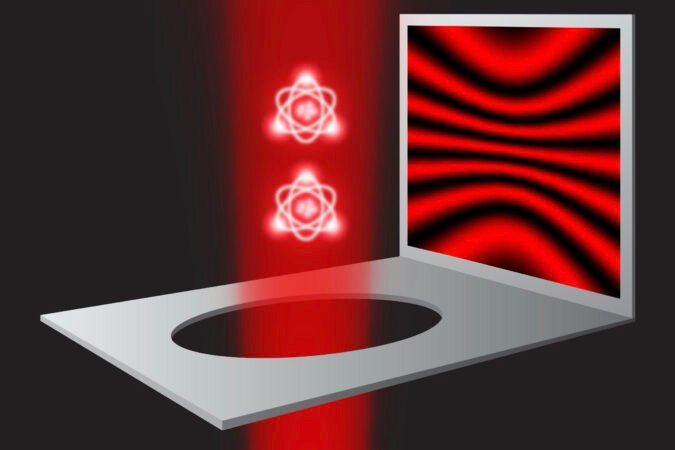Top Highlights
-
Quantum Duality Revealed: MIT physicists conducted a refined double-slit experiment, confirming that light behaves as both a particle and a wave, but not simultaneously, supporting quantum mechanics principles.
-
Challenging Einstein: The findings indicate Albert Einstein’s belief that light’s particle and wave behaviors could coexist was incorrect; measurement of light’s path diminishes the interference pattern.
-
Innovative Methodology: Using over 10,000 ultracold atoms and weak light, researchers manipulated atom "fuzziness" to demonstrate the probabilistic nature of photons successfully, reinforcing quantum theory predictions.
- Historic Relevance: This experiment, marking a significant advance in quantum physics, coincides with the 100th anniversary of key debates between Einstein and Niels Bohr, shedding light on long-standing theories.
Famous Double-Slit Experiment Confirmed in Quantum Testing
MIT physicists have reimagined the classic double-slit experiment, revealing new insights into the nature of light. This experiment, initially conducted by Thomas Young in 1801, has now been refined to show light’s dual behavior as both a wave and a particle. The findings also challenge an assertion made by Albert Einstein.
The double-slit experiment traditionally involved shining light through two narrow slits. This setup created an interference pattern, demonstrating that light can display wave characteristics. However, when researchers attempt to observe light as particles—known as photons—the interference pattern vanishes. This unexpected behavior highlights the complexities of quantum mechanics.
In their latest work, MIT scientists conducted the most simplified version of this experiment. Instead of using traditional slits, they employed individual atoms as slits. By using weak beams of light, each atom scattered only one photon. Furthermore, researchers prepared atoms in various quantum states, influencing the information obtained about the photon’s path.
Lead researcher Wolfgang Ketterle stated, "This is an idealized Gedanken experiment." The study confirmed that when more information was available regarding the photon’s path, the visibility of the interference pattern decreased.
The researchers tested Einstein’s hypothesis. Einstein believed that light’s particle nature could coexist with its wave nature. However, the MIT team found that the act of measuring a photon transforms its behavior from wave-like to particle-like. This revelation adds substantial evidence to support Bohr’s quantum theory.
The experiment’s practical implications extend beyond academic curiosity. As scientists continue to explore quantum mechanics, advancements in technology may emerge. For instance, understanding light’s dual nature could enhance developments in quantum computing and secure communications.
The study involved over 10,000 ultracold atoms arranged in a lattice structure. Using laser beams, the researchers manipulated the atoms to achieve precise conditions for observation. They discovered that controlling an atom’s "fuzziness," or uncertainty in its position, influenced whether the photon acted like a wave or a particle.
This innovative approach eliminated the need for additional equipment, such as springs, previously thought necessary for observing light’s duality. Instead, the research highlighted the critical role of atomic fuzziness.
As 2025 approaches—the International Year of Quantum Science and Technology—this research carries significant historical weight. It revives discussions from Einstein and Bohr’s debates, further enriching our understanding of quantum physics.
By pushing the boundaries of quantum experimentation, MIT’s groundbreaking work promises to illuminate future technological advancements. The full results of the study appear in the journal Physical Review Letters.
Continue Your Tech Journey
Learn how the Internet of Things (IoT) is transforming everyday life.
Explore past and present digital transformations on the Internet Archive.
QuantumV1

